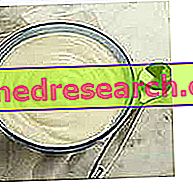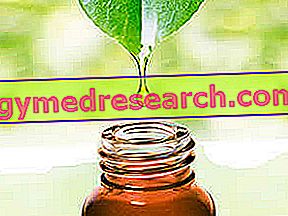Generality
Also known as salt therapy, halotherapy is an alternative treatment which consists in the exposure and consequent absorption of sodium chloride particles, in order to obtain a health benefit.

Salt therapy uses microclimates saturated with sodium chloride, artificial or natural, such as brackish caves and rock salt mines (speleotherapy). The haloterapeutical treatment has demonstrated substantial advantages for diseases affecting the respiratory tract, in particular it can be useful in case of viral infections, coughs, allergic colds, asthma, sinusitis, bronchitis, etc.
Halotherapy can be indicated as a complementary treatment for the benefits it can bring, but it must not replace drug therapy, especially in the case of chronic diseases.
What is halotherapy?
Salt therapy has very ancient roots. In ancient Greece, Hippocrates recommended the inhalation of salt water vapors to draw relief in case of inflammation of the respiratory tract, while the medieval monks led patients deep into the brackish caves, where they smashed the stalactites to infuse the air with particles of salt.
Today, halotherapy basically consists of the inhalation of an aerosol consisting of micronized sodium chloride. In a modern halotherapy session, the patient finds himself in a "salt room" specially designed to recreate the microclimate inside a natural brackish cave. Generally, the walls and floor of this confined space are also covered with salt. In order to make the atmosphere saturated with sodium chloride, special medical devices are used (halogenerators or salt micronizers) which dry-dry the pharmaceutical grade salt into micrometric-sized particles, which are subsequently ionized. The halogenator is programmed to synchronize grain size, concentration, temperature (18 ° -24) and humidity (40-60%). In fact, the artificial salt cave must generate a controlled microclimate so that salt therapy can have an optimal effect. A high concentration of unmonitored salt could cause, for example, fluid retention (lymphedema). The microclimate generator micronises the salt and mixes it carefully with a regulated current of air, which is then dispersed uniformly throughout the salt chamber. The tiny negatively ionized salt particles create an aerosol, capable of traveling deep into the respiratory system and reaching the lungs at the alveolar level.
Based on clinical studies, the inhaled saline air has an antibacterial and anti-inflammatory action throughout the respiratory tract, absorbs the edema (swelling) of the mucous membranes, makes the airways open and loosens the phlegm, thus restoring the normal functioning of the eyelashes that cover the respiratory tract. Normally, people who undergo a therapeutic session do not report any negative effects, but on some occasions the salt particles can trigger coughing attacks and mucus expulsion (which in other respects represents one of the supposed desired results).
A halotherapy session per adult subject lasts about 45 minutes, while the session for children is approximately 25 minutes. Some patients get considerable relief of symptoms over 4-5 sessions, but the therapeutic outcome is subjective. Currently, insufficient evidence is available to determine whether salt therapy is really effective. It is important to remember that salt is a complementary therapy: it helps to manage and control the pathological condition, but it should not be considered an alternative to drug treatment.
Action mechanism
The negatively charged aerosol is easily inhaled with the natural respiratory rhythm, as the salt particles are very small and almost imperceptible. Salt can be inhaled at the deepest level of the lungs, where it dissolves and attracts positive charges, such as small impurities, atmospheric pollutants or allergens, which are then expelled through cough, blood flow or leave the body via other metabolic processes .
Aerosol therapy with hypertonic saline inhalation can potentially:
- Eliminate mucus from the airways, so as to restore proper respiratory flow;
- Produce an anti-inflammatory and bactericidal effect;
- Reduce bronchial hyper-reactivity;
- Improve lung function;
- Help eliminate unwanted inhaled particles from the lungs.
Contraindications and side effects
In rare cases, temporary phenomena such as itching, skin, throat and eye irritation may occur during treatment.
The halotherapy is not recommended, however, for patients suffering from one of the following conditions:
- Acute states in the act of respiratory diseases;
- Intoxication due to alcohol or drugs;
- heart failure;
- Recent bleeding or epistaxis;
- Hemoptysis;
- Severe systemic hypertension.
Therapeutic Applications
What conditions can be treated with salt therapy?
The benefits of salt therapy have been highlighted in the modern era. During the Second World War, Dr. Karl Hermann Spannagel observed health improvements in his patients with respiratory diseases when they were sheltered from the bombing in Kluterthöhle, a salt cave in Germany used as a bunker for protection from air attacks. After the Second World War, several studies conducted and the popularity of the treatment in the places of origin allowed the spread of speleotherapy throughout Europe, especially for the treatment of asthma (improvement of symptoms, respiratory function and decreased use of drugs) and other respiratory diseases. Recently, further observations have concluded that salt therapy can be applied to a wider range of conditions.
Some of these include:
- Allergies;
- Allergic rhinitis (or hay fever);
- Cold and flu;
- Cough;
- Asthma;
- Sinusitis;
- Tonsillitis;
- Chronic bronchitis;
- Chronic obstructive pulmonary disease;
- Emphysema;
- Cystic fibrosis;
- Ear infections.
Furthermore, relief has also been observed from the symptoms of a variety of dermatological diseases, such as psoriasis, eczema, dermatitis and other skin irritations, as halotherapy helps to normalize the normal superficial skin flora.
Professionals point out that therapy can induce a mucolytic, anti-inflammatory, immunomodulatory and hyposensitizing (antiallergic) effect, but encourage patients not to stop using conventional medical therapy; in fact, halotherapy must always be considered as a form of complementary natural medicine.



